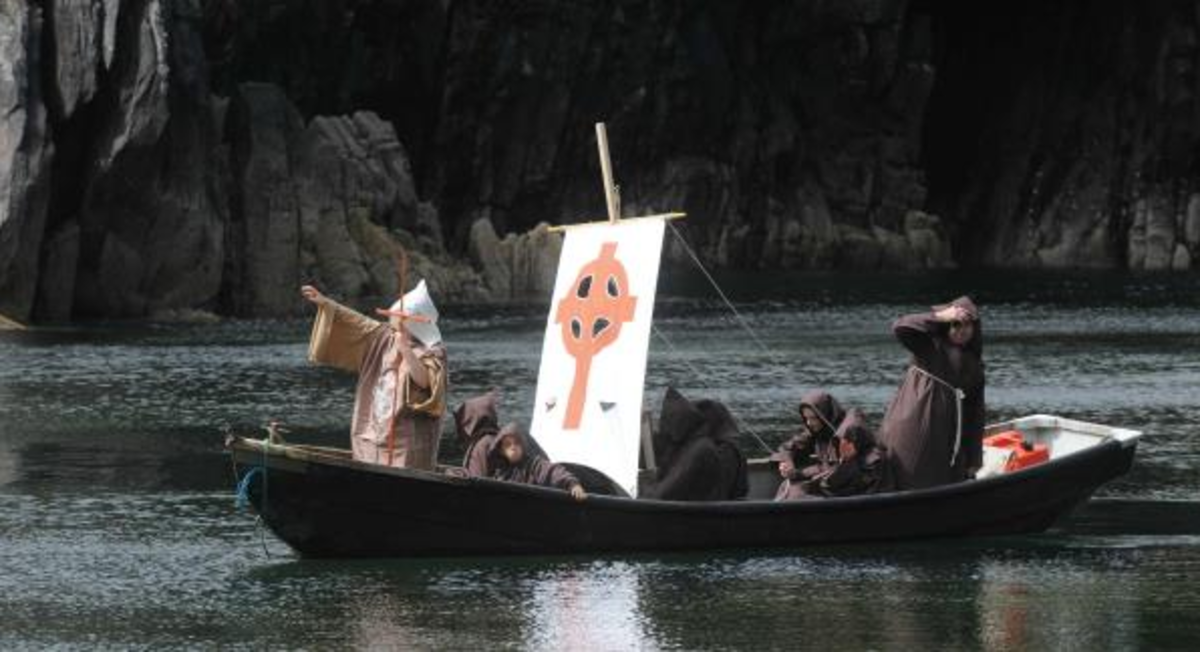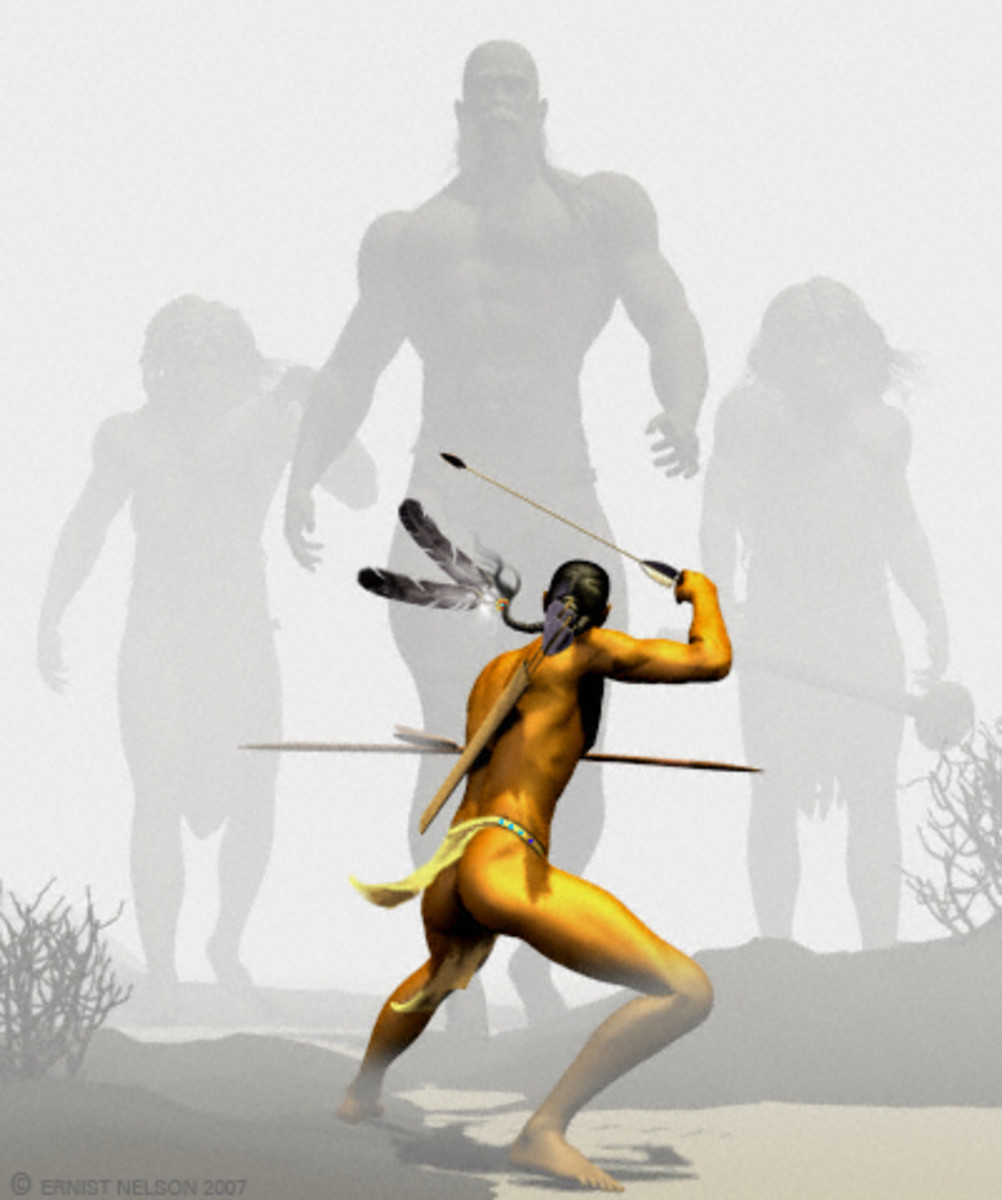Irish Origins
Irish Origins
A commonly accepted belief is that Columbus discovered America. However, recent discoveries have poured much controversy on the subject. Ideas from Norsemen, Chinese, and Irish have all been suggested as Pre-Columbus explorers who stumbled across America. One of the more compelling arguments is that of the Irish. Although there is not an extensive amount of evidence regarding these ideas, there is enough to say that without a doubt, Columbus was not the first. Anthropologists and archaeologists estimate that between 40 and 100 million Native Americans lived in the Americas when Columbus arrived, accounting for as much as one-fifth of the global population at the time (Clark). So, where did all those inhabitants come from if Columbus really found America? Of course, the answer is he was not the first person in the Americas; however, many people are going as far as saying that he was not even the first European. Christopher Columbus is accounted with the discovery of America; when in fact, it would be more accurate to say that Columbus was the first European to explore Central America with detailed accounts of his finds. There are many accounts of people from all different cultures landing on the shores of America by mistake, and simply turning around and sailing back home. The Chinese, for example, claim they knew about America since before 1421 and just simply had no interest in populating the land (Tvedtnes). The earliest account of a journey to America is that of an Irish monk named Saint Brendan who lived in the sixth century. Brendan, who was widely reputed as a skilled seafarer, is said to have undertaken an ambitious voyage. Brendan, along with a crew of fellow monks, sailed looking for Paradise, the Land of Promise of the Saints. After seven years exploring mysterious lands, he came upon what he believed to be the fabled paradise. It was an island so vast that he and his crew failed to reach the far shore after 40 days of walking. It contained a river that was too wide to be crossed. It was a wooded land, filled with lush fruits. He and his men filled their boats with gems they found there and returned home to tell of the news. This story was popularized in the ninth century and was translated in many languages. Oral accounts of the story began being told. As more time wore on, the accounts of Brendan and his monks started drifting from fact, into fiction. It was then published as Navigatio Sancti Brendani (The Voyage of Saint Brendan). Brendan tells of encountering “mountains in the sea spouting fire,” floating crystal palaces, monsters with catlike heads and horns growing from their mouths, and “little furry men.” Before concluding Brendan’s story as nothing more then myth, think about Iceland’s volcanoes, icebergs, walruses, and Eskimos.
Although there are several exaggerated accounts in the story, the book as a whole can not be labeled legend. The Viking’s even lend evidence that the Ancient Irish people were better traveled and better seafaring people. To conclude that the Irish discovered America based upon one fabled account is a bit of a stretch. However, the evidence does not stop there. The original inhabitants of North America built dwellings using ancient Irish systems. They even smoked clay pipes and distilled whiskey like the Irishmen of ancient times. Even their slanted writing methods are just like that of old Ireland. Dr Frank Faulkner, director of Irish Studies, at Holyoke Community College in Springfield said, "The Algonquin Indians in North Eastern USA and East Canada have more Irish in their language than any other native Indian languages”(Prendeville). Connections such as these cannot be counted as mere coincidence. An accepted tool for anthropologists and archeologists is finding similarities in peoples traditions and concluding upon some type of influence. So, based upon these similarities, it is very possible that the Irish people influenced the indigenous people of America. It is even possible that the Natives are actually descendants of the Irish people themselves.
If the Irish did indeed discover America, then they of course sailed here. So, is it possible that the Irish sea craft of the time were capable of making such a long voyage? According to Tim Severin, it is in fact possible. In the time of Brendan, the Irish boats were known as curragh and were approximately 36-feet long (Sullivan). Tim Severin, an author, filmmaker and adventurer, set out to prove it was in fact possible. He traveled to Ireland and constructed a curragh as accurate as possible to the ones in ancient times. Severin set sail from Ireland on May 17, 1976 and followed what is believed to be Brendan’s route from Scotland, to the Hebrides, to the Faroes, to Iceland, to Greenland, to Newfoundland, and Nova Scotia, the “Promised Land” (Sullivan). “[The crew] rose and sank on each wave crest with a motion that managed to be both ponderous and sensitive at the same time,” Severin wrote of his first hours on the Atlantic. Donald S. Johnson wrote admiringly of the voyage in his 1994 book, Phantom Islands of the tlantic : “This remarkable achievement ended all controversy over whether such a voyage was possible (…) the islands he visited and the events he encountered closely paralleled those of the ancient legend.”
Also, ancient Irish people were not sailing to the Americas as part of an experiment, but as a means of finding their Promised Land. In other words, their devotion to the cause must have been far more enduring and thus, perfection would have been made in not only the boat but in the skill of the sailors as well.
Barry Fell, a Harvard marine biologist, discovered some petroglyphs in West Virginia in 1983. Fell concluded that the writing was Ogam script, an Irish alphabet used between the sixth and eighth centuries. To every ones surprise, Fell found that the message in the rock described the Christian nativity. Many discount Fell’s findings and criticize his translation. However, no one can provide what the petroglyphs meaning or true origins are. So the possibility remains that they are in fact Ogam script.
There continues to be more findings in the Americas that suggest ancient Irish people were here. Findings such as old Celtic rock formations, to petroglyphs, to similarities in the traditions and customs of the people. Although a substantial amount of evidence is not present yet, it is clear that there is in fact enough to seriously consider putting research into the idea. Such findings cannot be ignored. Until a definitive answer is given that proves the Irish did not discover America, it remains a possibility. America could indeed be of Irish origins.








